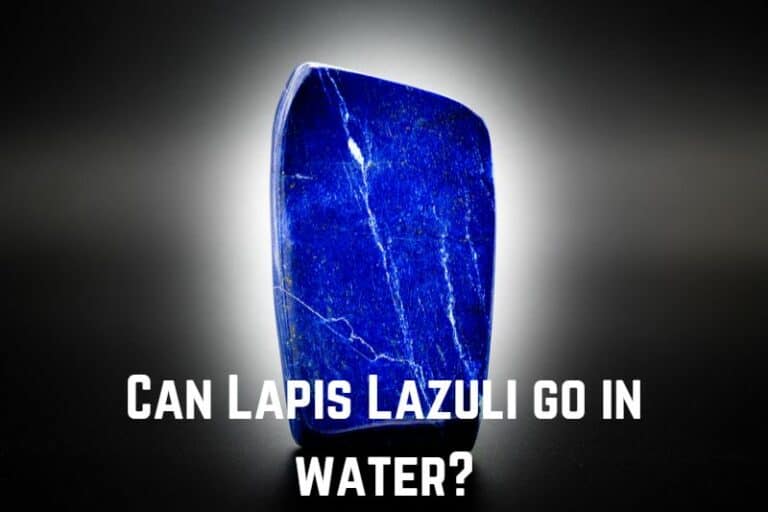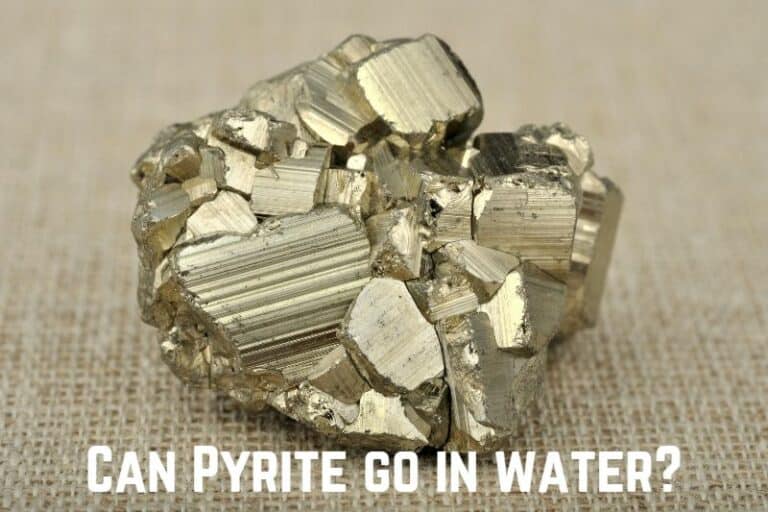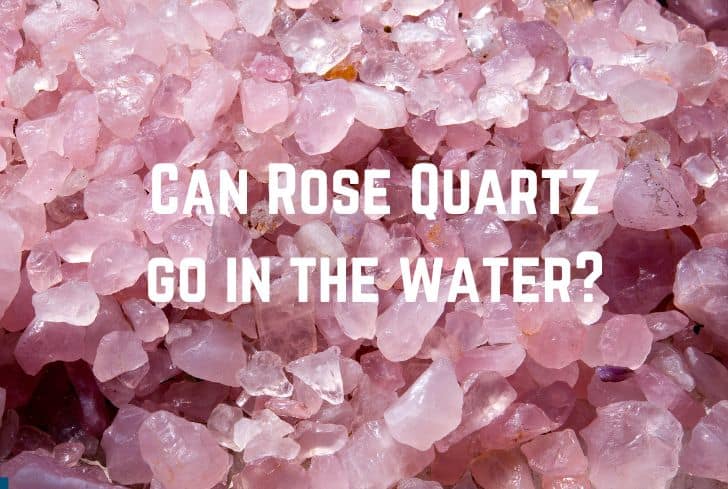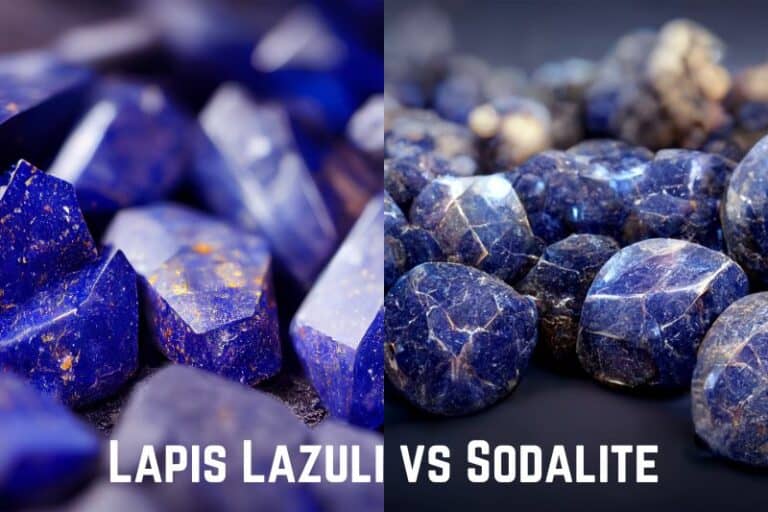Do Real Crystals Burn in a Fire? (And Melt?)

A crystal is a solid material whose constituents (atoms, molecules, etc.) are arranged in an extremely well-organized manner, forming a crystal lattice. When we hear the term “crystal”, we usually only think of minerals like diamonds. But in reality, crystals include a wide variety of things such as graphite, table salt, and even snowflakes!
In this article, we are going to discuss whether crystals burn or not. Then we will talk about how this method of burning can be used to examine the authenticity of crystals. We will also look at the other ways in which you can determine if your crystals are real.
Do Crystals Burn in a Fire?
No. A real crystal would survive the flame and not burn in a fire because crystals have very high melting points. As such, the flame from the candle won’t damage the crystal. All you would see is some black soot, which can be easily wiped off. On the other hand, an imitation made up of plastic will easily burn.
This is why burning is one way of testing whether a crystal is real or not.
A real crystal, say quartz, is not going to burn or melt until an extremely high temperature is applied (it has a melting point of 1650° C). But, in the case of an imitated crystal, even a lighter’s flame can make it deform.
Keep reading to find out what happens when you burn a crystal.
Do Crystals Burn in Candles?
No, a real crystal will not burn by a candle flame because they have very high melting points. Imitations, however, will easily burn with a noticeable smell and their shape will get deformed. This is why burning is one way of testing if a crystal is real or not.
What exactly happens when you burn a real crystal as against burning an imitated one? You begin by holding a lighter to the assumed crystal for 10-20 seconds.
If it’s a real crystal, it will not melt. Yes, there will be black marks on it, but this is simply the accumulation of soot (black substance formed during combustion). This can easily be wiped off from the crystal.
There will be no burning smell, and your crystal’s shape will be completely intact. In fact, in just a few minutes, the crystal will again become ice-cold, as real crystals always do. This is why another way of testing crystals is to hold them against your cheek to see if they feel cold.
Do Crystals Melt?
No, real crystals do not melt under normal conditions. So, if you are testing the authenticity of a crystal at home, it is unlikely that a real crystal will melt under your lighter’s flame. On the other hand, an imitated crystal (usually made up of plastic) will easily melt.
Different crystals have different melting points. So, for example, table salt has a melting point of 800°C, while quartz melts at over 1650 °C. But when we are talking about crystals in this context, we usually mean crystals that are used as jewelry or ornamentation, like rose quartz, howlite, etc.
These will not burn easily and therefore burning is a good way of testing if they are real.
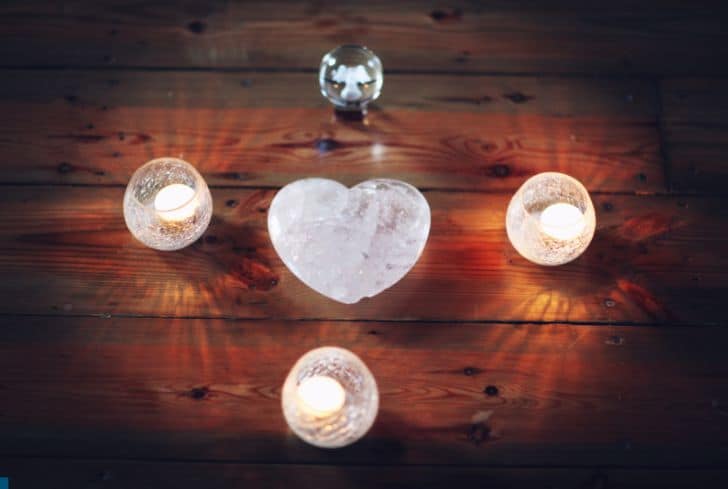
What Happens if You Burn a Crystal?
When you hold a lighter or a candle to a real crystal, it will not burn or melt. So, if you have a supposed crystal whose authenticity you want to test, you can hold a lighter next to it for about 10-20 seconds and easily test if it’s real.
When you do this, one of two things will happen:
- Its shape and structure remain intact. There is no melting and no burning smell. The only change is that there is that a black layer forms upon the crystal. This layer of soot can be easily wiped off after removing the flame. A few minutes later, the material looks exactly as it originally did and even feels ice-cold.
- It will melt and you will get a plastic-burning smell. After the flame is removed, you will see that its shape has been deformed. It looks nothing like what it originally did.
If you have the former situation, it means that the crystal is real. However, if the second scenario happens, then it means that what you have is an imitated crystal made up of plastic.
These days it is rather hard to differentiate fake crystals from real ones, especially since they are now able to replicate the inclusion pattern of genuine crystals. Keep reading to find out how you can ensure that what you have is real crystal.
You can check out the below video where a crystal is burned and tested.
Do Crystals Get Hot in the Sun?
Yes, crystals do get hot in the sun, and if left for a long time, they can even get damaged by the heat of the sun. But this depends on the kind of crystal you are considering. There are several crystals that will not lose their color or shine in the sun. A lot of them are kept out in the sun to get charged.
These include:
- Howlite
- Jade
- Black Onyx
- Carnelian
- Black Obsidian
- Sunstone
- Lapis Lazuli
- Amber
There are certain crystals like selenite, which will be fine under the sun for a reasonable amount of time but will get damaged if left for too long. You can keep it out for 2-3 hours, and you can also put it behind a window so that it doesn’t get direct sunlight. This would ensure that the crystal is not damaged by UV rays.
Several crystals should not be put in the sun at all. Otherwise, they will get damaged. These include:
- Fluorite
- Amethyst
- Opal
- Celestite
- Topaz
It’s always best to carry out research for specific crystals before putting them out in the sun or water. All treatment and care have to be crystal-specific.
Do Crystals Contain Water?
Yes, crystals do contain water and this is known as the water of crystalization. It refers to the number of water molecules that are present in a crystal. Water is a common solvent found in crystals because it is small and polar.
A good example is copper sulphate crystal. It is a blue diamond-shaped crystal that includes water in its structure. You can even test the presence of water by a simple test. If you heat copper sulphate crystal, it loses its water of crystallization and becomes white. If you add a few drops of water to this white powder, it regains its original blue color.
Another interesting example is the snowflake, which is also a kind of crystal. A snowflake is formed when a very cold water droplet falls onto a pollen or dust particle and freezes. As it falls to the ground, more water vapor freezes onto the central crystal, forming new crystals, which give the snowflake its six arms.
The water molecules of ice crystals are well-organized to form the six-sided snowflake. Hence, because of this extremely organized structure, snowflakes are also crystals.
How Can You Tell if a Crystal is Real?
A fake crystal can be made out of glass or plastic and is anything other than a natural crystal. There are several factors that you can consider while determining the authenticity of a crystal. These include:
1. Price
If the price of a crystal seems too good to be true, it most likely is. Always carry out proper research for every crystal: go through local shops, browse prices online, etc. Ensuring that the crystal under consideration is in the right price range is one way of checking its authenticity.
2. The reputation of the seller
Always look into the reputation of the person from whom you are buying crystals. These days it’s very easy to look up online reviews of a seller. Choosing a trusted seller means that you significantly lower the risk of getting a fake crystal.
3. Temperature
Real crystals are cold, and they do not capture heat for a long time. So, by pressing them to your skin, you can make a good estimate of their authenticity.
4. Hardness
A crystal’s hardness depends on its value on the Mohs scale. While different crystals have different levels of hardness, there are still some common properties that you can check. For example, most crystals will leave a mark on a piece of scratch glass. If your supposed crystal doesn’t do that, it might not be real.
5. Symmetry
Real crystals, formed out of natural crystallization, are hardly ever perfectly symmetrical. They will most likely have odd shapes and rough edges. If your crystal seems to be too perfect, it might be fake or chemically altered.
6. Glassy look
Painted or colored glass is another technique that comes under the scanner of being a real crystal or not. If you ever come across a crystal that is perfect in shape without a blot, then it could be a result of glass masquerading.
Other than these factors, as we discussed earlier, you can also test the authenticity of a crystal by burning it. If it’s not real, it will most likely melt with a plastic-burning smell and be completely deformed.
On the other hand, if it’s real, it will stay as it is, producing no smell, and only exhibit a layer of soot that can be easily wiped off.
Conclusion
In this article, we have discussed whether real crystals burn in a fire or not. A crystal is a solid whose constituents are extremely well-organized. Real crystals do not burn in fire, and this is why burning is one of the methods of testing a crystal’s authenticity. Finally, we looked at the different factors you can consider while determining if a crystal is real or not.


